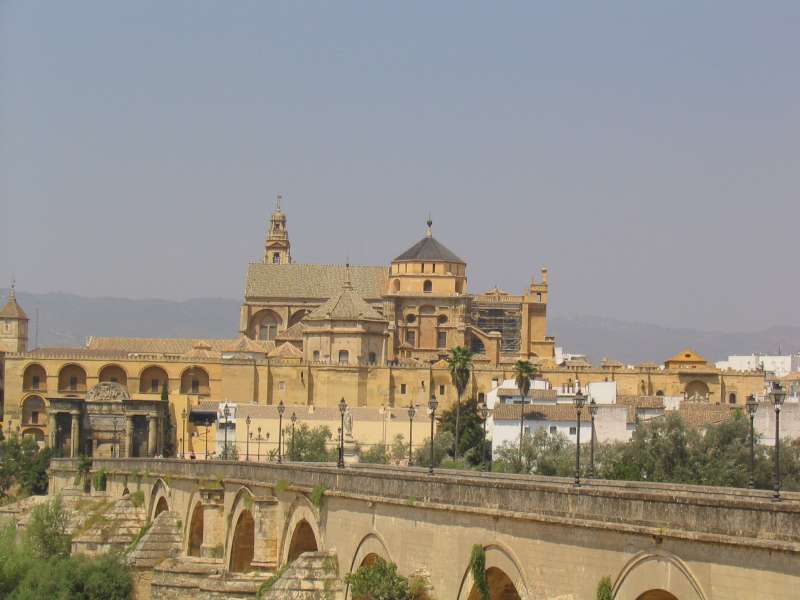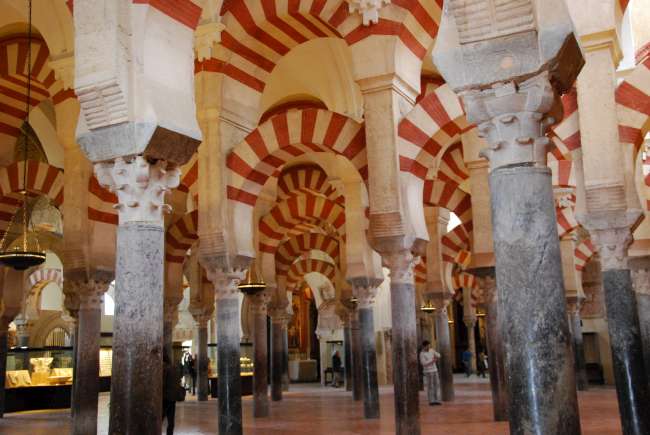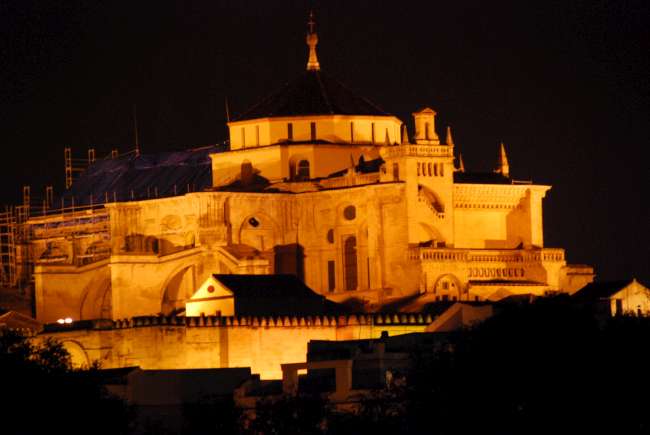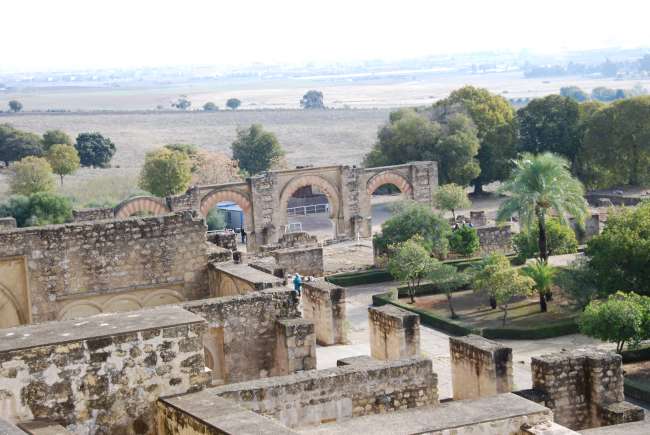
World Monument Photography
July 27, 2024
Cordoba is considered to be one the three largest Andalucian cities. Although historically more significant, today it is smaller than either Seville or Granada. Cordoba first entered the history books as being an important trading port for the Roman Empire trading in wine and olive oil. It was also the capital of the Hispania province.

Its real significance, as with virtually all other Andalucian towns, started with the Muslim conquest of Cordoba in 711 A.D. After the two Muslim generals Tariq ibn Zayid and Musa ibn Nusayr left the Iberian peninsula shortly after its conquest, Andalucia started to lose significance and attention of the central Umayyad Caliphate government. This was due to several reasons, but primarily to internal strife and divisions within the Umayyad leadership. At this time, Andalucia was considered to be a remote outpost of the Umayyad Caliphate and no significant resources were poured into the province.
The Umayyads rose to power as the first dynasty in an Islamic Empire. They moved their capital from Medina, in modern day Saudi Arabia, to Damascus, Syria. They built the Dome of the Rock in Jerusalem as well as the Great Mosque of Damascus. The Great Mosque of Damascus was originally a church. Half the church was purchased from the local Christian population and used as a mosque. For decades, people of both faiths used the same structure for their prayers. This continued until the Muslim population grew, while the Christian population dwindled. At this point, the Muslims bought the other half of the church the entire structure was then known as the Great Mosque of Damascus. The Umayyads defined their vision of Islam as one that loved its dialogues with other traditions while still maintaining their strong sense of identity as Arab Muslims. Indeed, a large reason for the Umayyad`s earlier successes is their ability to assimilate and even revive the rich gifts of earlier and indigenous cultures and incorporate it into their own.
In 750 A.D., the Umayyad Caliphate was overthrown by the Abassids as they ruthlessly murdered most of the royal family. Abd al-Rahman ibn Mouawiah and his younger brother Yahya managed to escape. In a dramatic attempt at escape, both swam across the dangerous Euphrates River (south of Damascus) fleeing the Abassids. After shouting promises for amnesty, Yahya foolishly believed the Abbasids and swam back to them despite his older brother`s advise. Upon Yahya`s arrival to the Abbasids at the river`s shore, he was decapitated in front of Abd al-Rahman`s eyes.

Abd al-Rahman came from a rather unique and interesting background. His father is of Yemenese background and his mother of Berber background. Even since his teenage years, he was recognized as being both witty and a strong warrior. He was nicknamed the “Hawk of Quraish.” (Quraish being the most powerful tribe in Arabia at the time). His mixed ethnic background, charisma, strong leadership qualities, and legitimacy (royal background) would help him rise to power in Andalucia.
In 755 Abd al-Rahman reached modern day Morocco near Ceuta. It was from here that he first glanced upon the thin strip of land on the horizon: al-Andalus! Abd al-Rahman was not sure if he would be welcomed or not in that far-flung province of the empire. He eventually sent a message to Iberia; a message in which he boldy proclaimed himself the rightful Umayyad heir to the land. Al-Andalus had been conquered during Abd al-Rahman`s grandfather`s reign. A great deal of Syrians were in al-Andalus, and Abd al-Rahman hoped to appeal to their inherent Umayyad loyalty. The province however was in a state of confusion caused by the weak rule of the current Emir Yusef al-Fihri. He was a puppet ruler controlled by a tribal faction. The Muslim community was torn by tribal dissensions between the Arabs and Berbers. Abd al-Rahman saw an opportunity he had failed to find in Africa. Abd al-Rahman received positive feedback regarding his proclamation from a group of loyal Umayyad followers. Shortly thereafter, Abd al-Rahman set off with a small group of followers for Europe. Abd al-Rahman landed at Almunecar in al-Andalus, to the east of Malaga, in September 755.
Abd ar-Rahman was greeted by local chieftains upon landing in al-Andalus. He immediately headed for Cordoba, where he fought a small band of Abassid loyal followers. He quickly defeated them, ushering the Umayyad Caliphate in Andalucia. He ruled Andalucia until his death in 788 AD.

During his reign, he made several accomplishments to ensure the success of his new nation. He created a strong army of 100,000 soldiers that came from a diverse ethnic background. He built the Great Mosque of Cordoba in the same style as the Great Mosque in Damascus. He first purchased half of an existing church, creating a building where both Muslims and Christians worshipped God. As the size of the Muslim population grew, the second half of the church was purchased creating the Great Mosque of Cordoba. He established the first formal monetary system. He imported the first palm trees and citrus fruits into the Iberian peninsula. He also ensured equality and fairness to all his subjects. During his reign, anti-Jewish laws that were inforced during the Visigoth`s reign were abolished. Taxes on Jews and Christians were reduced to 2.5 percent, the same tax that Muslims pay. He built naval ports in Marea and Lisbon on the west coast to repel Norman invaders. Among his personal traits is that he would convince others of his opinions without ever dictating his own opinion. He knew of the external dangers that existed from the Abassid domains, Leon, and France. By the time that Abd al-Rahman I died, he left behind an entire nation able to fend for itself.
Cordoba continued to prosper under Muslim rule for the next 250 years. At its height, it was home to a half million people who lived in 113,000 homes; it contained 70 libraries filled with thousands of books each, 900 public baths, 1,600 mosques, and more than 80,000 shops. The Great Mosque of Cordoba, La Mezquita, continued to grow up until the times of Hisham II in the 11th century. The streets of Cordoba were lit by lamps 700 years before London. This city was by far the most sophisticated in Europe at the time. The La Mezquita was also considered to be the largest moque in the Muslim world at the time. The University of Cordoba was founded in Abd al-Rahman III`s reign. By the late 10th century and early 11th century, the Arabs in the Caliphate of Cordoba began advances the science and math innovating new branches science such as botony and sociology. Also a new type of poetry developed in Cordoba where certain lines were repeated – the modern form of virtually all world music today. There are even records of sailors traveling the "Sea of the Great Fog" (old name of the Atlantic Ocean) and returning with great treasures a year later – undoubtedly resulting from trade with the Aztec and Inca civilizations in the Americas. There are even records of early maps of the Americas documented as far back as the eighth and ninth centuries.

As Cordoba became more prosperous, the more extravagant show of wealth became. This reached to the point of people becoming overly obsessed with the pleasure and decadence of enjoying the pleasures of their surroundings. This, inevitably, offended the more conservative elements in Andalucian society, especially the army, who saw their rulers being too much involved in worldy pleasures and forgetting the dangers they face from both the Abassid and northern Christian kingdoms.
Finally, the bubble burst in 1009 when the army revolted against their weak leaders. When this happened however, different army units revolted separately resulting in chaos that ripped the Iberian peninsula for three decades. At the end, the once proud Caliphate of Cordoba disintegrated into over thirty petty Taifa kingdoms.
This brought an era of political strife, but economic and social renaissance to Cordoba. Cordoba was home to Ibn Rushd (Averros) 1126-1198, who was a philosopher and physician. Crystal manufacturing was invented in Cordoba, new methods of manufacturing paper were invented, and the famous geographer, al-Idrisi, was trained in Cordoba (1100-1166). Finally, Abu-Imran Musa Ibn-Maymun (1135-1204), “Maimondes” – the most famous Jewish philosopher, was a native of Cordoba. He was one of the first responsible for the revival of the Hebrew language and was the first to write Hebrew poetry since the Jewish expulsion from Jerusalem at the hands of the Romans.
Cordoba fell into the hands of al-Moravids (North African Berber tribe) in 1094, then to the Al-Mohads in 1149 (another North African Berber tribe). In 1236, the city fell to Christian hands … with the help of the Muslims in Granada, in exchange for their own safety. The La Mezquita was gradually changed into a church. The most radical change was in 1523 under Charles V`s rule. He remarked on the changes saying to the priests: “You have built what you or others might have built anywhere else, but you have destroyed something that was unique in the world.” Shortly after the Christian conquest, Cordoba fell into steep decline.
Today, Cordoba is a popular tourist attraction, with the largest attraction being La Mezquita. Although prayer is allowed in the central cathedral, to this day, congregational Muslim prayer anywhere in the mosque is forbidden and is well-enforced.